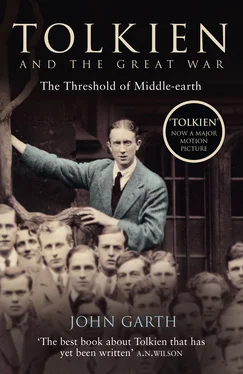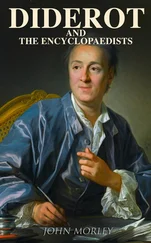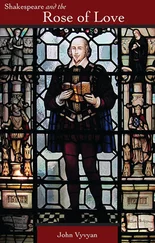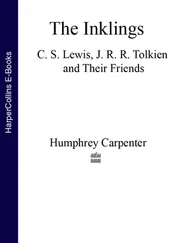Mabel Tolkien had communicated to her eldest son a taste for drawing. He used his first sketchbook for drawings of starfish and seaweeds. Another seaside holiday, at Whitby in 1910, produced evocative pictures of trees, landscapes, and buildings. Tolkien’s artistic response was aesthetic and emotional rather than scientific. His figures and portraits were at best comical or stylized, at worst rudimentary, and he remained modest about his abilities as a visual artist. His greatest strengths lay in decoration and design, exemplified famously by the iconographic covers of The Hobbit and The Lord of the Rings.
Tolkien had also inherited via Mabel a flair for calligraphy from her father, John Suffield, whose ancestors had been platemakers and engravers. Mabel’s own handwriting was highly stylized, with curlicued capitals and descenders, and crossbars slanting expressively upwards. For formal purposes, Tolkien came to favour a script based on the medieval ‘foundational hand’, but when he wrote letters as a young man he seemed to have a different style of writing for each of his friends, and later when drafting at speed he produced a scrawl resembling nothing so much as an electro-cardiograph image of a frenzied pulse.
Tolkien learned to read by the age of four and absorbed the children’s books that were then popular: Robert Browning’s ‘The Pied Piper of Hamelin’, or the stories of Hans Christian Andersen, which irritated him; tales of Red Indians; George MacDonald’s The Princess and the Goblin , or Andrew Lang’s Fairy Books, which stirred a desire for adventure. He particularly yearned for tales of dragons.
But fairy-stories were not the key to his boyhood tastes. ‘I was brought up in the Classics,’ he wrote later, ‘and first discovered the sensation of literary pleasure in Homer.’ By the time he was eleven, an Oratory priest told Mabel he had read ‘ too much, everything fit for a boy under fifteen, and he doesn’t know any single classical thing to recommend him’. It was through the study of classics, and particularly through school exercises translating English verse into Latin or Greek, that Tolkien’s taste for poetry was awakened. As a child he had habitually skipped any verse he encountered in the books he read. His King Edward’s schoolteacher, R. W. Reynolds, tried largely in vain to spark his interest in the mainstream giants of English poetry, such as Milton and Keats. But the Catholic mystic Francis Thompson won Tolkien’s passionate approval for his metrical and verbal accomplishments, his immense imagery, and the visionary faith underpinning his work. Thompson, hugely popular after his early death in 1907, appears to have influenced the content of one of Tolkien’s first attempts at poetry, ‘Wood-sunshine’, written as an eighteen-year-old. Like Thompson’s long sequence ‘Sister Songs’, it dealt with a sylvan vision of fairies:
Come sing ye light fairy things tripping so gay,
Like visions, like glinting reflections of joy
All fashion’d of radiance, careless of grief,
O’er this green and brown carpet; nor hasten away.
O! come to me! dance for me! Sprites of the wood,
O! come to me! Sing to me once ere ye fade!
William Morris’s use of verse in his pseudo-medieval romances was also to leave its mark on Tolkien’s own early poetry.
Morris was important, too, because of his association with Exeter College, Oxford, where he had formed the self-styled Pre-Raphaelite Brotherhood with fellow student Edward Burne-Jones (himself a former pupil of King Edward’s School). Tolkien once likened the TCBS to the Pre-Raphaelites, probably in response to the Brotherhood’s preoccupation with restoring medieval values in art. Christopher Wiseman characteristically disagreed, declaring the comparison wide of the mark.
Mabel’s attempts to teach her elder son to play the piano foundered. As Humphrey Carpenter writes in his biography of Tolkien, ‘It seemed rather as if words took the place of music for him, and that he enjoyed listening to them, reading them, and reciting them, almost regardless of what they meant.’ He showed unusual linguistic propensities, in particular a keen sensitivity towards the characteristic sounds of different languages. His mother had started teaching him French and Latin before he went to school, but neither of these languages particularly appealed to him. At eight, however, the strange names on railway coal-trucks had given him a taste for Welsh. He was drawn to a different flavour in some of the names he encountered in history and mythology, writing later: ‘The fluidity of Greek, punctuated by hardness, and with its surface glitter, captivated me…and I tried to invent a language that would embody the the Greekness of Greek…’ That was before he even began learning Greek itself, at the age of ten, by which time he was also reading Geoffrey Chaucer. A year later he acquired Chambers’ Etymological Dictionary , which gave him his first glimpse of the principle of ‘sound shift’ by which languages evolve.
This opened a new world. Most people never stop to consider the history of the language they speak, just as they never ponder the geology of the ground they stand on; but Tolkien was already contemplating the evidence by reading Chaucer’s Middle English. The ancient Romans had recognized that some words in Latin and Greek sounded alike – akin, some thought. Over the centuries, haphazard attention was paid to such similarities in a growing number of languages, and wild claims had been made for the original ancestor of all languages. But in the nineteenth century scientific rigour was finally applied to the subject and the discipline of comparative philology emerged. Its key realization was that languages do not change randomly, but in a regular way. Philologists could codify the phonological ‘laws’ by which particular sounds had changed at different stages of a language’s history. Chambers’ dictionary introduced Tolkien to the most famous of all, Grimm’s Law, by which Jakob Grimm nearly a century earlier had codified the complex of regular changes that produced (for example) the words patér in Greek and pater in Latin but father in English and vatar in Old High German, all from a single unrecorded ‘root’. These (though not all) languages were demonstrably related, in ways that were open to rational analysis; furthermore, by comparing them it was possible to reconstruct elements of their ancestral language, Indo-European – a language from before the dawn of history that had left no record whatsoever. This was heady stuff for a young boy, but it would shape his life.
By the time he met Grimm’s Law, Tolkien had begun inventing languages of his own. This was partly for the practical fun of making secret codes and partly for sheer aesthetic pleasure. A pot-pourri of mangled classical words called Nevbosh (actually originated by a cousin) was followed in 1907 by the more rigorously constructed Naffarin, influenced by the sounds of Spanish (and so by Father Francis, who was half-Spanish and half-Welsh). For his final four years at King Edward’s, Tolkien was in the senior or First Class under the Headmaster, Robert Cary Gilson, who encouraged him to look into the history of Latin and Greek. But soon his wayward tastes led him beyond the Classical world. A former class-teacher, George Brewerton, lent Tolkien an Anglo-Saxon primer, which he studied in his spare time. At school he excelled in German, winning first prize in the subject in July 1910, but by 1908 he had discovered Joseph Wright’s Primer of the Gothic Language , and this long-dead Germanic tongue on the edges of written history took his linguistic heart ‘by storm’.
Others might have kept such recondite interests to themselves, but at school Tolkien was effusive about philology. Rob Gilson described him as ‘quite a great authority on etymology – an enthusiast’, and indeed Tolkien once lectured the First Class on the origins of Europe’s languages. Against the Classicist ethos drummed into King Edward’s schoolboys he played the outsider with verve. He combatively told the literary society that the Volsunga Saga , the tale of the dragon-slayer Sigurd, displayed ‘the highest epic genius struggling out of savagery into complete and conscious humanity’. He even addressed one of the annual Latin debates in Gothic.
Читать дальше












